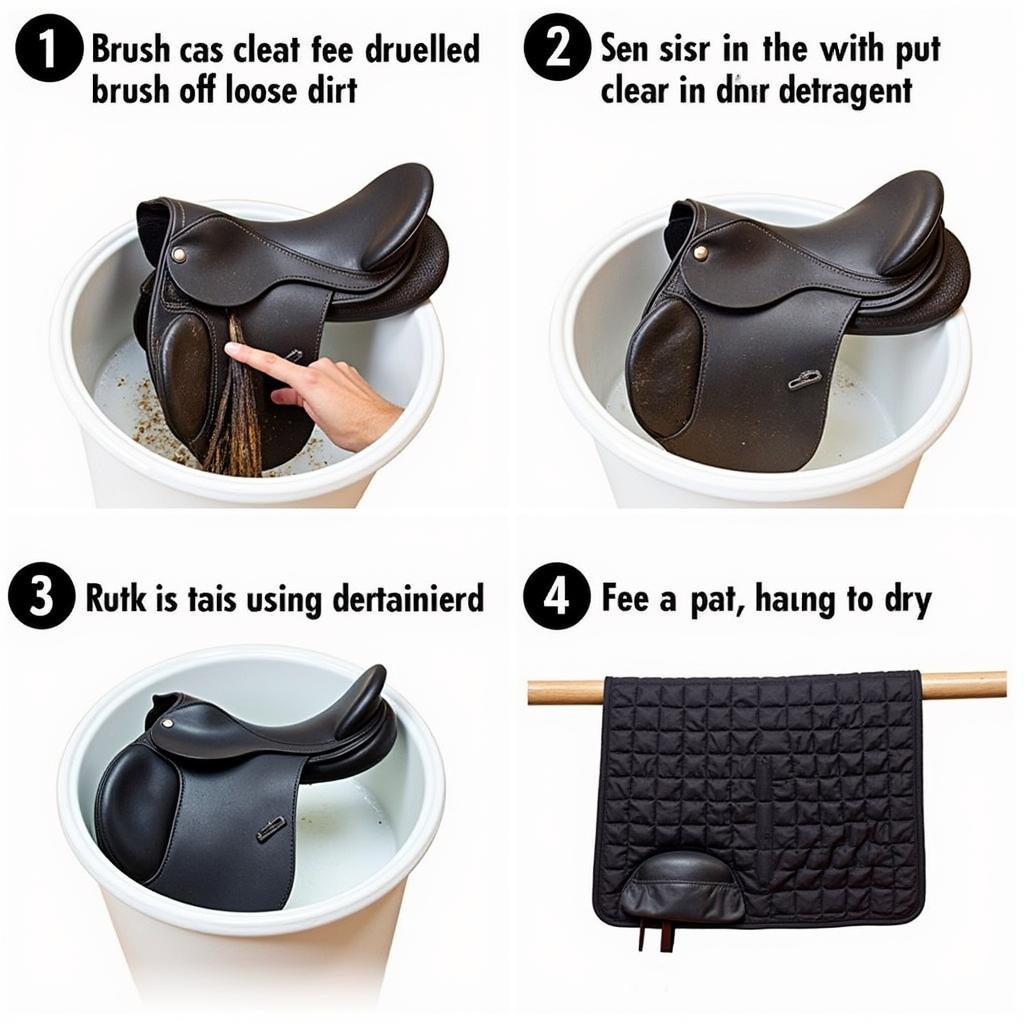Cutting Horse Saddle Pads are essential for both horse and rider comfort and performance in the demanding sport of cutting. They provide crucial cushioning, protect the horse’s back, and help keep the saddle secure. Selecting the right pad requires careful consideration of various factors, including material, thickness, and fit.
Choosing the right cutting horse saddle pad can significantly impact your horse’s performance and well-being. Let’s explore the key aspects to consider when making your selection.
Understanding the Importance of Cutting Horse Saddle Pads
Cutting requires quick stops, sharp turns, and explosive bursts of speed. These movements can put a lot of stress on a horse’s back. A high-quality cutting horse saddle pad absorbs shock, reduces friction, and distributes pressure evenly, minimizing the risk of sores and discomfort. Additionally, it helps to wick away moisture, keeping the horse’s back cool and dry.
For the rider, a good saddle pad provides stability and a more secure seat, allowing for greater control and communication with the horse. It also enhances comfort, especially during long rides and intense competitions.
After the opening paragraph, we thought it’d be beneficial to add a link to our accessories horse page. You might find other useful items for your cutting horse there.
Key Factors in Choosing a Cutting Horse Saddle Pad
Several factors influence the choice of a cutting horse saddle pad. Understanding these elements will guide you towards the perfect fit for your equine partner.
Material
- Wool: Known for its excellent moisture-wicking properties, breathability, and natural cushioning. Wool pads are durable and conform well to the horse’s back.
- Felt: A traditional choice, offering good cushioning and shock absorption. Felt pads are relatively inexpensive but can be heavier and take longer to dry.
- Synthetic materials: Modern synthetic materials offer a range of benefits, including lightweight design, quick-drying capabilities, and antimicrobial properties. They are often more affordable than wool.
Thickness and Shape
The thickness and shape of the pad should complement your saddle and horse’s conformation. Thicker pads offer more cushioning, while thinner pads allow for closer contact with the horse. Contoured pads are designed to follow the shape of the horse’s back, providing a more customized fit.
Fit and Size
The saddle pad should fit snugly under the saddle without bunching or shifting. It should be large enough to protect the horse’s back from the saddle’s edges but not so large that it extends beyond the saddle’s skirts.
“A properly fitted saddle pad is crucial,” says renowned equine veterinarian Dr. Emily Carter. “It should distribute pressure evenly, preventing pressure points and ensuring the horse’s comfort.”
Maintaining Your Cutting Horse Saddle Pad
Proper care extends the life of your saddle pad and ensures optimal hygiene. Regular cleaning removes sweat, dirt, and hair, preventing the build-up of bacteria and mold.
Cleaning Tips
- Air dry your pad after each ride.
- Brush off loose dirt and hair regularly.
- Wash your pad according to the manufacturer’s instructions, using mild detergent and cold water.
- Avoid using bleach or harsh chemicals.
 Cleaning a Cutting Horse Saddle Pad
Cleaning a Cutting Horse Saddle Pad
“Regular cleaning prevents the build-up of bacteria, which can cause skin irritation and infections,” adds Dr. Carter. “It also helps to maintain the pad’s shape and functionality.” Investing in quality unique horse gifts for ladies like a well-made saddle pad is a great idea.
Conclusion
Choosing the right cutting horse saddle pad is an investment in your horse’s comfort and performance. By considering factors like material, thickness, fit, and maintenance, you can ensure that your horse is protected and comfortable during every ride. A well-chosen cutting horse saddle pad is essential for optimal performance in the cutting arena.
FAQ
- How often should I replace my cutting horse saddle pad? Replace your pad when it shows signs of excessive wear, compression, or damage.
- What is the best material for a cutting horse saddle pad? The best material depends on individual needs and preferences, but wool and quality synthetics are popular choices.
- How do I measure my horse for a saddle pad? Measure from the center of the withers to the edge of the saddle’s skirt.
- Can I use a regular saddle pad for cutting? While possible, a specialized cutting horse saddle pad is recommended for optimal performance and protection.
- How do I clean a wool cutting horse saddle pad? Hand wash with cold water and a mild detergent specifically designed for wool.
- What is the purpose of a contoured saddle pad? A contoured pad follows the shape of the horse’s back, providing a better fit and reducing pressure points.
- How do I prevent my saddle pad from slipping? Use a non-slip pad liner or ensure your saddle fits correctly.
Common Scenarios
- Scenario 1: Horse experiences rubbing and sores after cutting practice. Consider a thicker pad or a different material with better moisture-wicking properties.
- Scenario 2: Saddle feels unstable during cutting maneuvers. Check the fit of both the saddle and pad. A contoured pad might provide better stability.
- Scenario 3: Saddle pad becomes excessively dirty and smelly. Increase the frequency of cleaning and ensure proper drying after each ride.
Further Exploration
Explore other articles on our website for more information on horse care and equipment.
If you need assistance, please contact us at Phone Number: 0772127271, Email: [email protected] Or visit us at: QGM2+WX2, Vị Trung, Vị Thuỷ, Hậu Giang, Việt Nam. We have a 24/7 customer support team.